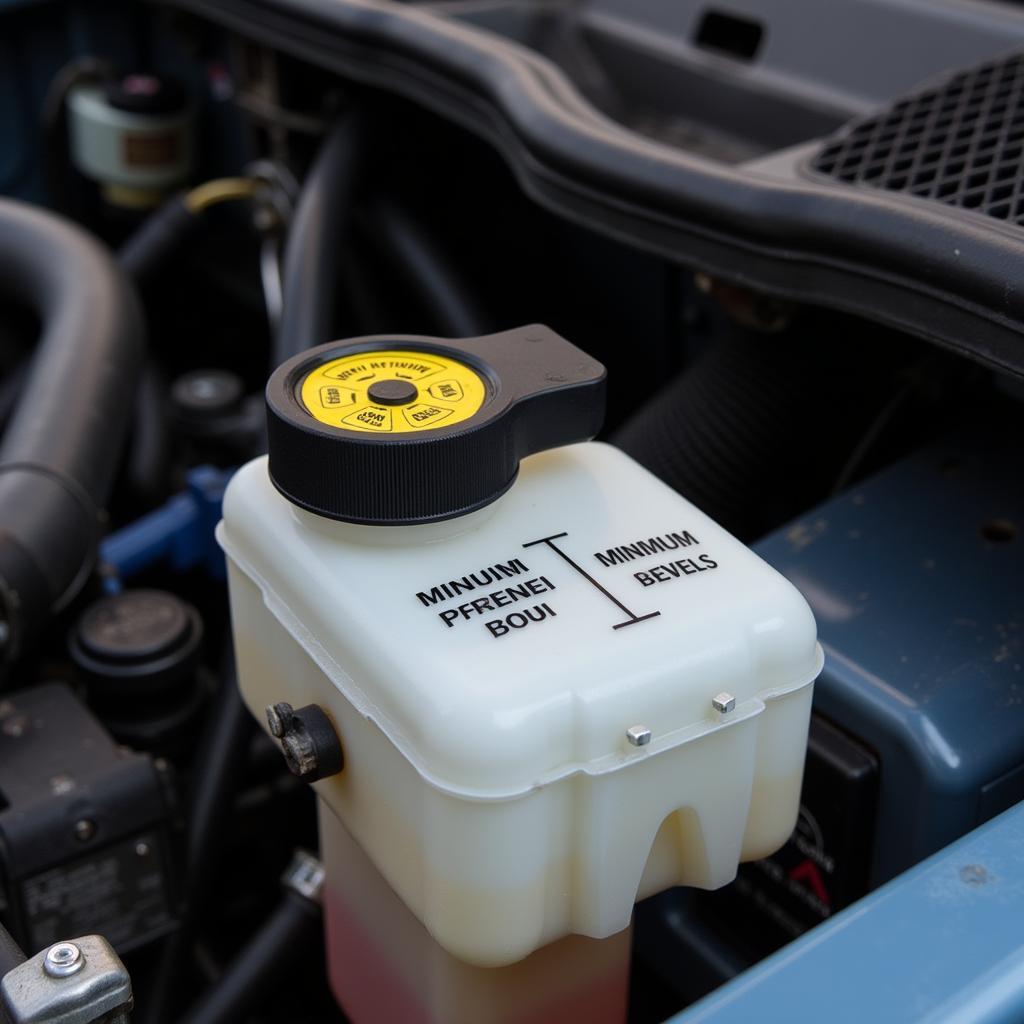If your 2008 Mercedes 550SL is displaying a service brake warning light, it’s crucial to address the issue promptly. This warning light indicates a potential problem with your braking system, which could compromise your safety on the road.
This comprehensive guide will delve into the common causes of this warning light in the 2008 550SL, explain how to diagnose the problem, and outline potential solutions. We’ll empower you with the knowledge to understand and potentially resolve the issue, whether you’re a seasoned DIY mechanic or prefer seeking professional help.
Understanding the Service Brake Warning Light
The service brake warning light, often symbolized by a red circle with an exclamation point (!) or the word “BRAKE” inside, is your car’s way of alerting you to a potential problem within the braking system.
In the 2008 550SL, this system is complex, incorporating various components like:
- Brake Fluid: This hydraulic fluid transmits force from the brake pedal to the wheels, enabling braking action.
- Brake Pads and Rotors: These components work together to create friction, slowing down the vehicle when you apply the brakes.
- Brake Lines and Hoses: These carry the brake fluid throughout the system.
- Sensors: These monitor different aspects of the braking system, triggering the warning light if they detect an issue.
Common Causes of the Service Brake Warning Light in a 2008 550SL
Several factors can trigger the service brake warning light in your 2008 550SL. Here are some of the most frequent culprits:
1. Low Brake Fluid
Why it matters: Brake fluid is the lifeblood of your braking system. If the fluid level drops too low, it can significantly reduce braking efficiency, making it harder to stop your car.
Possible causes:
- Brake Pad Wear: As your brake pads wear down, the brake calipers need to extend further to engage the rotors, which requires more brake fluid.
- Brake Fluid Leak: A leak in the brake lines, hoses, or other components can cause a loss of brake fluid.
How to check:
- Locate the brake fluid reservoir under the hood (refer to your owner’s manual for the exact location).
- Check the fluid level. It should be between the minimum and maximum marks.
 Brake Fluid Reservoir
Brake Fluid Reservoir
2. Worn Brake Pads
Why it matters: Brake pads are designed to wear down over time. When they become too thin, their ability to generate friction and slow down the vehicle is significantly reduced.
Signs of worn brake pads:
- Squealing or screeching noise when braking.
- A grinding metal-on-metal sound when braking (indicating severely worn pads).
- Vibration or pulsation in the brake pedal.
How to check:
- Visually inspect the brake pads through the wheel spokes. You should be able to see the thickness of the friction material.
- If the friction material is less than 1/4 inch thick, it’s time to replace the brake pads.
3. Faulty Brake Sensor
Why it matters: The brake sensor monitors the thickness of your brake pads and triggers the warning light when they wear down to a certain level. A malfunctioning sensor might trigger the light even if your pads are still in good condition.
Signs of a faulty sensor:
- The service brake warning light stays on even after replacing the brake pads.
- Inconsistent brake warning light behavior (e.g., it flickers or turns on and off intermittently).
How to check:
- Diagnosing a faulty brake sensor typically requires specialized tools and expertise. It’s best to consult a qualified mechanic for this.
4. Issues with the ABS System
Why it matters: The Anti-lock Braking System (ABS) prevents your wheels from locking up during hard braking, helping you maintain steering control. A problem with the ABS module, wheel speed sensors, or other ABS components can trigger the service brake warning light.
Signs of ABS problems:
- The ABS warning light may also be illuminated on the dashboard.
- Unusual noises or sensations when braking, such as grinding or pulsating.
How to check:
- Diagnosing ABS issues requires specialized equipment and knowledge. It’s recommended to take your car to a qualified mechanic or dealer for diagnosis and repair.
What to Do When Your Service Brake Warning Light Comes On
- Pull over safely. As soon as it’s safe, pull over to the side of the road and assess the situation.
- Check your brake fluid level. If it’s low, add brake fluid to bring it to the proper level. Important: Use only the type of brake fluid specified in your owner’s manual.
- Inspect your brake pads. If you see significant wear or if you hear unusual noises when braking, it’s crucial to have your brake pads inspected by a professional.
- Seek professional help. If you’re unsure about the cause of the problem or if you suspect an issue with the ABS system or brake sensors, it’s best to seek assistance from a qualified mechanic or dealership.
Conclusion
Addressing a service brake warning light promptly is essential for your safety. By understanding the common causes and following the steps outlined in this guide, you can take appropriate action to resolve the issue and keep your 2008 Mercedes 550SL running smoothly and safely. Remember, when in doubt, consult a qualified professional for expert diagnosis and repair.
